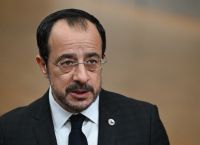Hagia Sophia Restoration: Byzantine-Hellenistic Icon Faces Quake Risk

Πηγή Φωτογραφίας: Pixabay//Hagia Sophia Restoration: Byzantine-Hellenistic Icon Faces Quake Risk
For nearly 1,500 years, Istanbul’s Hagia Sophia has stood as a testament to resilience, surviving empires, earthquakes, and shifting roles as a cathedral, mosque, museum, and mosque again.With the city facing a looming seismic threat, experts are undertaking its most extensive restoration in a century to preserve this iconic monument, whose design draws on Hellenistic architectural traditions.
“Hagia Sophia is like an aging patient, its structure growing more complex with time,” said Hasan Fırat Diker, an architecture professor at Fatih Sultan Mehmet Vakif University and member of the Hagia Sophia Scientific Committee. This multidisciplinary team is leading efforts to reinforce the building while respecting its rich architectural and historical legacy.Completed in 537 CE as a Byzantine cathedral, Hagia Sophia served as a Christian church for over 900 years until its conversion to a mosque in 1453 following the Ottoman conquest. It became a museum in 1935 under the Republic of Türkiye and was reconverted into a mosque, known as the Hagia Sophia Grand Mosque, in 2020. Its pioneering dome, supported by pendentives, collapsed in 558, 989, and 1346 due to earthquakes but was rebuilt each time, enduring further quakes in 1509, 1526, 1766, and 1894.
Hellenistic Influences: Hagia Sophia’s architectural grandeur owes much to Hellenistic traditions, which shaped Byzantine design. The monumental scale, intricate geometry, and use of arches trace back to Hellenistic innovations seen in structures like the Mausoleum at Halicarnassus. The dome’s ambitious design reflects Greek architectural principles, blending with Roman engineering and Christian symbolism to create a unique masterpiece.
“Hagia Sophia is the heart of Istanbul,” Diker said. “Its survival reflects the care of the Byzantines, Ottomans, and Turkish Republic, each preserving it according to their era’s resources and priorities.”
Now undergoing its most comprehensive restoration since 1923, the project initially focused on Ottoman-era structures but has shifted to the main building. “We’ve identified its weakest points and are reinforcing them carefully,” Diker explained. A key issue is the four asymmetrical arches supporting the dome, thinned during Byzantine-era repairs, making the structure vulnerable.
Earthquakes pose a risk called “hammering,” where semi-domes sway and collide with the main dome, potentially damaging it. Engineers are strengthening connections to mitigate this. “We can’t rebuild Hagia Sophia, so we use targeted interventions to extend its life while preserving its character,” Diker said.
The restoration includes clearing underground sections, repairing the dome and minarets, and addressing structural weaknesses. Unlike past efforts, which limited scaffolding during its museum era, this project adopts a holistic approach, guided by advanced earthquake simulations developed since the 1999 Gölcük quake.
“We’re preparing for worst-case seismic scenarios,” Diker said, noting that modern technology and global quake data enable precise interventions. The goal is minimal interference to maintain the building’s historical integrity, including its Hellenistic-inspired elements.
Ilknur Türkoğlu, a cultural heritage expert at Istanbul Gelişim University, emphasized Istanbul’s seismic vulnerability. “While not directly on a major fault line, the region’s active faults caused devastating quakes like those in 1999 and 2023,” she said. With Istanbul’s dense population, a similar event today could be catastrophic.
As a former capital of the Roman, Byzantine, and Ottoman empires, Istanbul’s historic structures, including Hagia Sophia, face unique risks. Türkoğlu stressed the need for a comprehensive inventory of cultural assets. “We must assess and reinforce these sites urgently,” she said.
Museums in historic buildings require better preparedness, including drills, secure artifacts, and emergency systems like automatic utility shut-offs. “Unsecured objects can cause harm, even if walls stand,” Türkoğlu warned, citing lessons from the 1999 and 2023 quakes.
Hagia Sophia’s restoration reflects a commitment to preserving its legacy as a global cultural treasure, blending Hellenistic, Byzantine, and Ottoman influences, ensuring it endures Istanbul’s seismic challenges.
Source: pagenews.gr
Διαβάστε όλες τις τελευταίες Ειδήσεις από την Ελλάδα και τον Κόσμο






Το σχόλιο σας